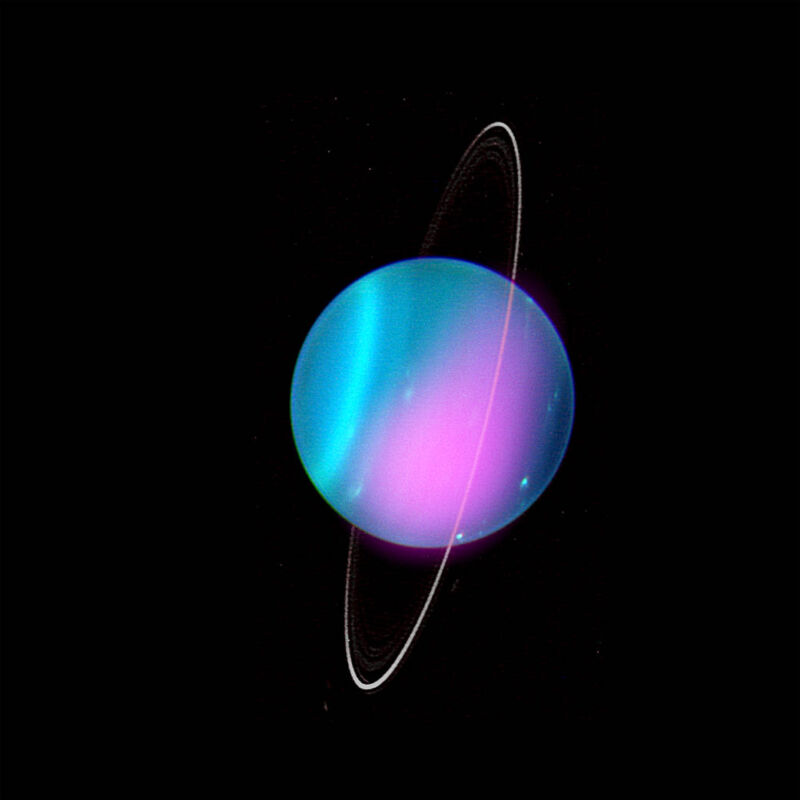NASA’s next decade: Build a mission to an ice giant

Enlarge (credit: NASA/CXO/University College London/W. Dunn et al; Optical: W.M. Keck Observatory)
Late in 2021, the astronomy community released its decadal survey, a road map of scientific priorities for the next 10 years, which describes the hardware we need to build in order to achieve them. That survey was focused on distant objects and recommended projects like large, broad-spectrum space telescopes.
This week sees the release of a second decadal survey, this one focused on the needs of astronomers and planetary scientists who focus on the objects in our Solar System. This survey's big-ticket recommendations are orbiters for Uranus and Enceladus, while smaller missions include preparations for sample returns from Mars, the Moon, and Ceres. As always, what we get done will depend on whether the planetary science budgets do better than keeping pace with inflation.
Big prioritiesThe survey lays out the overall scientific themes behind the priorities, but they're broad enough that they pretty much cover everything. As listed, they include a look at the materials present in small bodies within the Solar System to infer the details of planet formation from the protoplanetary disk, and observations of the planets to track their evolution since then. Also a priority: moon formation; studying the interiors and atmospheres of the planets; and the role of impacts in shaping planet evolution. Finally, there's the possibility of life existing at present or in the past on a body other than Earth.
Read 14 remaining paragraphs | Comments